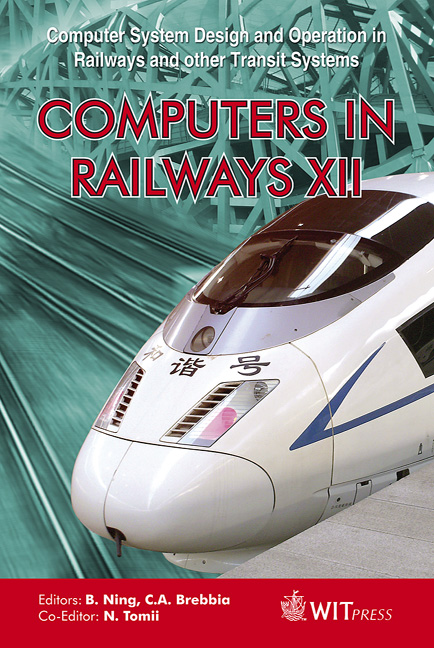Track Measurement By Kyushu Shinkansen Cars In Commercial Service
Price
Free (open access)
Transaction
Volume
114
Pages
7
Page Range
147 - 153
Published
2010
Size
467 kb
Paper DOI
10.2495/CR100151
Copyright
WIT Press
Author(s)
H. Moritaka & T. Matsumoto
Abstract
The Kyushu Railway Company (JR [Japan Railway] Kyushu) has introduced, for the first time in Shinkansen trains in Japan, a device that can measure all track irregularity using cars in commercial service. With that, special measurement cars were no longer needed, and frequent monitoring of the status of tracks became possible. The track irregularity measurement device employs an inertial measurement method, whereby track irregularity can be measured at a single cross-section. It is mounted with a special attachment base at the center of the bogie frame on rear bogies of the lead cars at both ends of the train. Measurement operations are done by remote control from PCs at the wayside. Devices that can measure track irregularity, body vibration acceleration, and axle box vibration acceleration were mounted to Shinkansen cars in commercial service introduced in August 2009, and use of the devices commenced. Those cars have run 458,299 km as of the end of April 2010, and track measurement was made without problems in the 27,412 km for which measurements were taken. Keywords: Kyushu Shinkansen, track measurement by Kyushu Shinkansen cars in commercial service, the inertial versine method. 1 Introduction The Kyushu Railway Company (JR [Japan Railway] Kyushu) has been proceeding since FY 2005 with the technical development of measurement functions for track irregularity, vibration acceleration, and axle box vibration acceleration to add to Shinkansen cars in commercial service. As a result, the
Keywords
Kyushu Shinkansen, track measurement by Kyushu Shinkansen cars in commercial service, the inertial versine method





